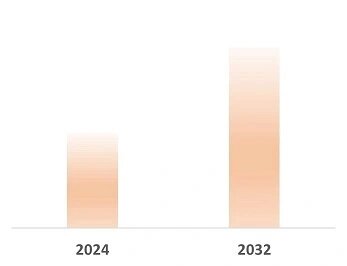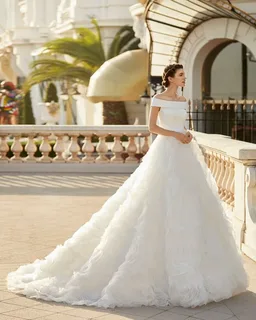Embroidery is an ancient art that has evolved over centuries, weaving cultural heritage into modern fashion. Once reserved for royal garments and religious vestments, embroidery now plays a crucial role in contemporary clothing, blending tradition with innovation. Thanks to embroidery digitizing, the art form has transitioned from hand-stitched craftsmanship to machine-assisted precision, allowing designers to experiment with intricate patterns and unique cultural motifs.
This blog explores the cultural significance of embroidery in modern fashion, its historical influences, and how digital embroidery techniques are transforming the industry.
1. A Brief History of Embroidery in Fashion
Embroidery dates back thousands of years, appearing in cultures across the globe, from Chinese silk robes to intricate Indian sarees. The craft was initially a symbol of status and wealth, with artisans meticulously stitching designs onto garments for emperors, kings, and nobility.
With the advent of technology, embroidery moved from manual techniques to machine-based processes, making intricate patterns accessible to a wider audience. Today, modern designers use embroidery digitizing to replicate traditional motifs while adding contemporary flair.
2. Embroidery as a Reflection of Cultural Identity
Embroidery is more than just decoration; it reflects cultural heritage and identity. Various regions have distinct embroidery styles that hold deep historical and emotional significance.
Traditional Embroidery Styles Across the World
- China: Suzhou embroidery is known for its delicate silk threads and lifelike depictions of animals and nature.
- India: Zardozi and Chikankari embroidery techniques are widely used in wedding attire and high-fashion garments.
- Mexico: Otomi embroidery features vibrant floral and animal patterns that represent indigenous storytelling traditions.
- Middle East: Palestinian Tatreez embroidery is a symbol of resistance and cultural pride, often found on keffiyehs and dresses.
- Europe: French and Italian embroidery techniques are known for their fine craftsmanship, often seen in haute couture fashion.
As fashion becomes more globalized, designers incorporate these traditional embroidery styles into modern collections, preserving their cultural essence while adapting them for contemporary tastes.
3. The Role of Embroidery in Modern Fashion
Luxury Fashion and Haute Couture
High-end fashion houses like Chanel, Dior, and Valentino frequently use embroidery to create one-of-a-kind, hand-stitched masterpieces. These designs, often inspired by historical motifs, showcase how embroidery maintains its exclusivity in luxury fashion.
Streetwear and Everyday Apparel
Embroidery has also found its place in casual wear, with brands incorporating embroidered patches and stitched logos on denim jackets, hoodies, and sneakers. Embroidery digitizing allows for precise, mass-produced designs, making embroidery accessible to mainstream fashion.
Sustainable and Ethical Fashion
With the rise of ethical fashion, many designers are turning to hand-stitched and eco-friendly embroidery techniques. Artisans from different cultures are collaborating with fashion brands, ensuring fair trade practices and reviving traditional embroidery methods.
4. How Embroidery Digitizing is Revolutionizing Fashion
What is Embroidery Digitizing?
Embroidery digitizing is the process of converting artwork into digital files that embroidery machines can read. This technology allows designers to create intricate embroidery patterns with precision and efficiency.
Benefits of Embroidery Digitizing in Fashion
- Preservation of Traditional Motifs: Designers can scan and digitize cultural embroidery patterns, ensuring their accuracy and replication in modern designs.
- Customization and Personalization: Digital embroidery enables customized clothing with unique patterns, names, and monograms.
- Faster Production: Automated embroidery machines produce high-quality stitches in a fraction of the time compared to hand embroidery.
- Cost-Effectiveness: Fashion brands can scale production without sacrificing quality, making embroidery accessible to a broader market.
Many contemporary designers use embroidery digitizing to blend traditional artistry with modern technology, creating innovative and culturally rich fashion pieces.
5. The Influence of Embroidery in Global Fashion Trends
Celebrity Endorsement and Red Carpet Fashion
Celebrities often wear intricately embroidered gowns at red carpet events, showcasing the cultural richness of embroidery. Designers like Elie Saab and Alexander McQueen frequently incorporate embroidered motifs inspired by different cultures.
Embroidery in Bridal and Evening Wear
Bridal fashion heavily relies on embroidery, with lace, beadwork, and floral embroidery enhancing wedding gowns. Many brides seek custom embroidery to incorporate personal and cultural symbols into their dresses.
Athleisure and Sportswear
Even in athleisure and sportswear, embroidery is gaining popularity. High-end brands like Nike and Adidas use embroidered details on jackets, caps, and sneakers to add a premium touch to their collections.
Revival of Hand Embroidery in High Fashion
While embroidery digitizing dominates modern manufacturing, hand embroidery is experiencing a revival, particularly in artisanal and sustainable fashion brands. Designers are reintroducing hand-stitched elements to emphasize craftsmanship and exclusivity.
6. Challenges and Future of Embroidery in Fashion
Challenges:
- Balancing Tradition and Innovation: Some critics argue that machine embroidery loses the essence of hand-stitched craftsmanship.
- Fast Fashion vs. Ethical Embroidery: Mass production often exploits artisans, leading to concerns about cultural appropriation and fair wages.
- Environmental Impact: Some embroidery techniques require synthetic threads and dyes that contribute to pollution.
Future Trends:
- AI-Powered Embroidery Digitizing: Artificial intelligence is being used to optimize digital embroidery patterns for precision and efficiency.
- Sustainable Embroidery: The use of organic and plant-based threads is gaining traction in eco-friendly fashion.
- Cultural Collaborations: More fashion brands are partnering with indigenous artisans to preserve authentic embroidery techniques.
Conclusion
Embroidery is an essential part of modern fashion, deeply rooted in cultural traditions while evolving with technology. From haute couture to everyday wear, it continues to captivate designers and consumers alike. The integration of embroidery digitizing has made it possible to preserve traditional motifs while adapting them to contemporary trends.
As fashion moves towards a more sustainable and culturally inclusive future, embroidery will remain a powerful tool for storytelling and artistic expression. Whether through hand-stitched craftsmanship or digital innovation, embroidery’s cultural significance will continue to inspire generations to come.
FAQs: Cultural Significance of Embroidery in Modern Fashion
Q1: How does embroidery reflect cultural heritage?
Embroidery represents cultural identity through traditional motifs, colors, and stitching techniques. Many designs carry historical or symbolic meanings that tell stories of heritage and craftsmanship.
Q2: What is the impact of embroidery digitizing on traditional embroidery?
While embroidery digitizing has made embroidery more accessible and efficient, it also raises concerns about losing the authenticity of hand-stitched embroidery. However, many brands use digitization to preserve traditional patterns and collaborate with artisans.
Q3: How is embroidery used in modern fashion?
Embroidery appears in luxury couture, streetwear, bridal fashion, and accessories. Brands use it for decorative patterns, branding, and even functional elements in sportswear.
Q4: Is embroidery sustainable?
It depends on the materials used. Hand embroidery with natural threads is sustainable, whereas machine embroidery with synthetic threads can have environmental impacts. Many brands are now focusing on eco-friendly embroidery techniques.
Q5: What are the advantages of using embroidery digitizing in fashion?
Embroidery digitizing offers precision, efficiency, and cost-effectiveness. It allows designers to experiment with intricate designs and scale production without compromising quality.




